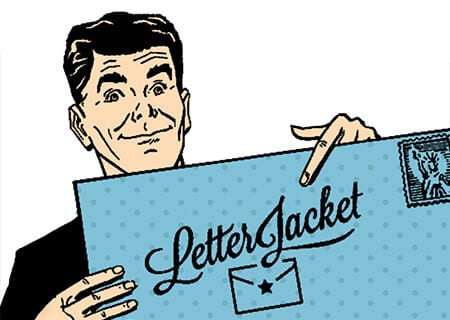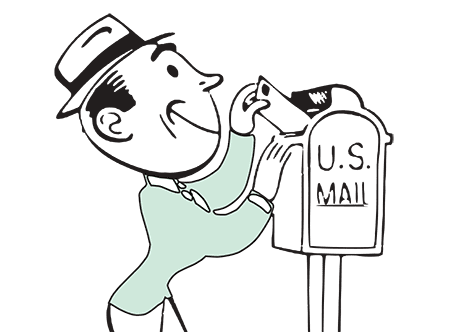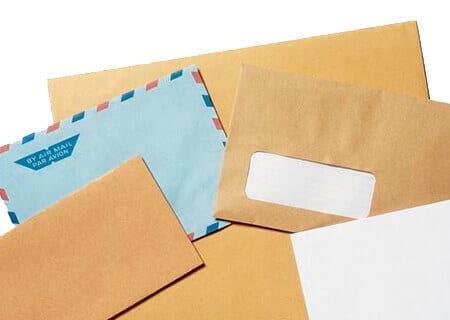Designing custom-printed envelopes might seem simple, but there is much to consider. It’s like picking out the perfect outfit for your message, and choosing the right printing technique and finishing touch is the final touch to make your envelopes stand out and impress. It is necessary for:
- Business letters
- Wedding invites
- Promotional mail
- Holiday cards
- Thank-you notes
- Event invitations
- Fundraising appeals
- Corporate announcements
- Direct mail campaigns
- Subscription renewals
- Product launch notifications
- Personal correspondence
- Special orders, and more…
So, what printing methods and finishing options need to be considered? What are the pros, cons, and cost factors?
What is the difference between offset printing and digital printing?
Offset printing uses metal plates to transfer ink onto paper, making it ideal for high-volume, high-quality prints with consistent color accuracy. Digital printing, on the other hand, directly transfers designs from a digital file to paper, offering faster turnaround and lower costs for small print runs.
Offset Printing for Custom-Printed Envelopes
What is Offset Printing?
The offset printing process begins with a transfer of ink from a plate to a rubber blanket or roller, and then to various substrates. If you’ve ever watched magazine-making videos from the old days, this is how it was done. Offset printing produces high-quality images and designs for mass production. In this case, the ink is then perfectly applied to the envelope to create a stunning result.
Pros:
- High-quality prints.
- Sharp, detailed images with vibrant colors.
- Cost-effective for large runs, the setup cost is higher, but the per-envelope cost decreases with larger orders.
Cons:
- Not ideal for small runs due to the initial setup time and expense.
- Setup and production take more time compared to digital printing.
Cost Factors
Offset printing is more economical for large runs, but the cost per envelope drops as the order size increases.
Digital Printing for Custom-Printed Envelopes
What is Digital Printing?
Digital printing directly transfers designs from a computer file onto the envelope without the need for plates. It offers a quicker, more flexible option.
Pros:
- Digital printing is fast and perfect for last-minute orders.
- No setup fees make it ideal for small print runs.
Cons:
- While digital printing has improved, it may not offer the same sharpness or color accuracy as offset.
- Limited paper options, not all papers are suitable for digital printing, restricting your choices for custom envelope finishes.
Cost Factors
Digital printing is cheaper for small quantities, but the prices increase as the order size grows.
Flexographic Printing for Custom-Printed Envelopes
What is Flexographic Printing?
Using flexible rubber plates to transfer ink to envelopes is called flexographic printing. It’s especially effective for non-porous materials like plastic or glossy paper.
Pros:
- Ideal for large-volume jobs.
- Suitable for non-porous materials and works well on glossy or plastic-coated envelopes.
Cons:
- Like offset, flexographic printing requires setup time and is best for large orders.
- Not as versatile as other printing methods for paper types.
Cost Factors
Flexographic printing is best suited for large orders. Initial setup costs are high, but unit costs decrease with volume.
Letterpress Printing for Custom-Printed Envelopes
What is Letterpress Printing?
A traditional method that involves pressing inked plates onto the envelope to create a raised or indented impression.
Pros:
- The best for a luxury feel.
- The raised print creates a tactile, high-end experience.
- Ideal for formal invitations and premium business communication.
Cons:
- The labor-intensive process makes it one of the costliest options.
- Limited color options, typically only one or two colors are used, making it less suitable for complex designs.
Cost Factors
Letterpress printing is costly, especially for short runs, but it’s the best choice for high-end, luxury projects.
Finishing Techniques for Custom-Printed Envelopes
Once the printing is done, adding finishing touches can enhance the appearance and feel of your custom envelopes. Some popular options include:
- Foil Stamping. Adds a metallic sheen, perfect for logos or accents.
- Embossing/Debossing. Creates raised or recessed designs for a tactile, high-quality finish.
- Spot UV Coating. Adds gloss to specific areas for contrast against matte backgrounds.
- Die-Cutting. Allows for custom-shaped envelopes and adds uniqueness to your design.
Key Takeaways:
- Offset printing is ideal for high-volume, high-quality prints with precise color accuracy, but has higher setup costs and longer production times for small runs.
- Digital printing offers quick turnaround and no setup fees – the perfect option for small print runs.
- Flexographic printing is great for large volumes and non-porous materials like glossy or plastic-coated envelopes.
- Letterpress printing provides a luxurious, tactile finish ideal for premium projects.
All About Printing with Letter Jacket Envelopes
Finding the perfect print format for custom envelopes is the same as choosing the right tool for the job. If you’re handling a big order with spot-on color needs, offset printing has your back. For small runs, digital printing is the best option. For glossy materials, flexographic printing is the go-to. If you want to add luxury, letterpress brings a high-end vibe and texture paired with exclusivity. The chosen printing method with the right finishing touches will ensure your envelopes stand out and leave a lasting impression.
Letter Jacket Envelopes understands that the right envelope can make a lasting impression. A trusted provider of custom printed envelopes for over 60 years, we offer businesses high-quality, professional mailing solutions for everyday use or custom designs for special occasions.
See different envelope sizes and styles to help you make a lasting impression. Visit the shop today.



